Methodism, also called the Methodist movement, is a Protestant Christian tradition whose origins, doctrine and practice derive from the life and teachings of John Wesley. George Whitefield and John's brother Charles Wesley were also significant early leaders in the movement. They were named Methodists for "the methodical way in which they carried out their Christian faith". Methodism originated as a revival movement within Anglicanism originating out of the Church of England in the 18th century and became a separate denomination after Wesley's death. The movement spread throughout the British Empire, the United States and beyond because of vigorous missionary work, and today has about 80 million adherents worldwide.
The Methodist Episcopal Church (MEC) was the oldest and largest Methodist denomination in the United States from its founding in 1784 until 1939. It was also the first religious denomination in the US to organize itself nationally. In 1939, the MEC reunited with two breakaway Methodist denominations to form the Methodist Church. In 1968, the Methodist Church merged with the Evangelical United Brethren Church to form the United Methodist Church.
The Methodist Episcopal Church, South was the American Methodist denomination resulting from the 19th-century split over the issue of slavery in the Methodist Episcopal Church (MEC). Disagreement on this issue had been increasing in strength for decades between churches of the Northern and Southern United States; in 1845 it resulted in a schism at the General Conference of the MEC held in Louisville, Kentucky.
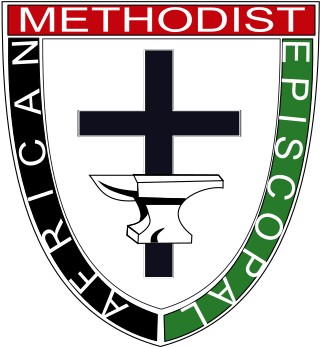
The African Methodist Episcopal Church, usually called the AME Church or AME, is a Methodist denomination based in the United States. It adheres to Wesleyan-Arminian theology and has a connexional polity. It cooperates with other Methodist bodies through the World Methodist Council and Wesleyan Holiness Connection.

Herbert George Welch was an American bishop of the Methodist Episcopal Church, The Methodist Church and the United Methodist Church. He was elected to the episcopacy in 1916. He also distinguished himself as a Methodist pastor, and as the fifth President of Ohio Wesleyan University, Delaware, Ohio.
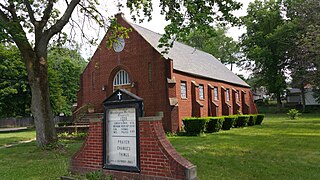
The Wesleyan Methodist Church was a Methodist denomination in the United States organized on May 13, 1841.
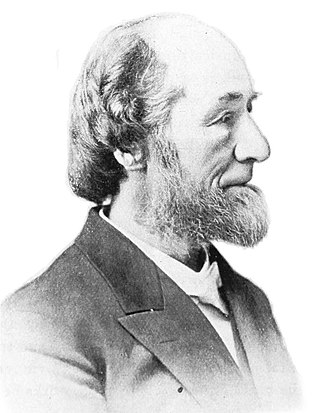
Charles Henry Payne (1830–1899), a clergyman, revised the hymn-book of the Methodist denomination in the late 19th century. He was president of Ohio Wesleyan University and an author.
George Richmond Grose (1869–1953) was an American academic administrator and a bishop of the Methodist Episcopal Church, elected in 1924, serving as a missionary bishop in China.

James Whitford Bashford was a bishop of the Methodist Episcopal Church in the United States and the first bishop of the Methodist Episcopal Church in China.
Charles Wesley Brashares (1891–1982) was an American bishop of The Methodist Church and the United Methodist Church, elected in 1944.

Rev. William Fraser McDowell, A.B., S.T.B., was an American bishop of the Methodist Episcopal Church.
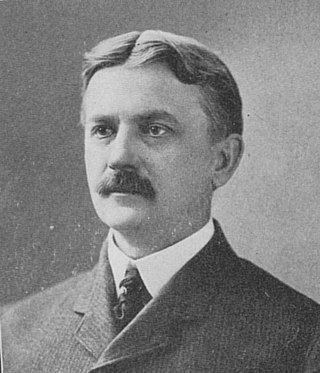
David Hastings Moore was an American bishop of the Methodist Episcopal Church, elected in 1900. He gained notability as a Union Army officer in the American Civil War, as a pastor, as the editor of a Methodist periodical, and as a university chancellor.
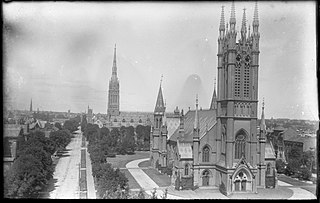
The Methodist Church was the major Methodist denomination in Canada from its founding in 1884 until it merged with two other denominations to form the United Church of Canada in 1925. The Methodist Church was itself formed from the merger of four smaller Methodist denominations with ties to British and US Methodist denominations.
An annual conference is a regional decision-making body within various Methodist denominations. Conferences are a key characteristic of the connexional (connectional) system of government in Methodism. Annual conferences are composed primarily of the clergy members and a lay member or members from each charge. Each conference is a geographical division. In general, the smaller states in the United States hold one conference each, while larger states often include two or more conferences. Several annual conferences are held in other nations as well.
William Logan Harris was an American bishop of the Methodist Episcopal Church, elected in 1872.
The Rev. Titus Lowe was an English-American bishop of the Methodist Episcopal Church and The Methodist Church, elected in 1924.
Methodist views on the ordination of women in the rite of holy orders are diverse.
The Allegheny Wesleyan Methodist Connection (AWMC) is a Methodist denomination within the conservative holiness movement. It is primarily based in the United States, with missions in Peru, Ghana, and Haiti. The Allegheny Wesleyan Methodist Connection is currently led by Rev. David Blowers (President) and Rev. Joseph Smith.

The history of Methodism in the United States dates back to the mid-18th century with the ministries of early Methodist preachers such as Laurence Coughlan and Robert Strawbridge. Following the American Revolution most of the Anglican clergy who had been in America came back to England. John Wesley, the founder of Methodism, sent Thomas Coke to America where he and Francis Asbury founded the Methodist Episcopal Church, which was to later establish itself as the largest denomination in America during the 19th century.
The Bible Methodist Connection of Churches is a Methodist denomination within the conservative holiness movement. The connection is divided into four regional conferences: the Southern Conference, led by Rev. John Parker; the Southwest Conference, led by Rev. G. Clair Sams; the Heartland Conference, led by Rev. Chris Cravens; and the Great Lakes Conference, led by Rev. David Ward.